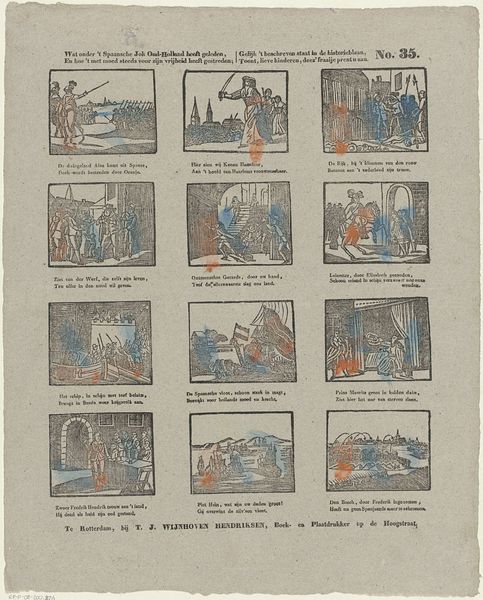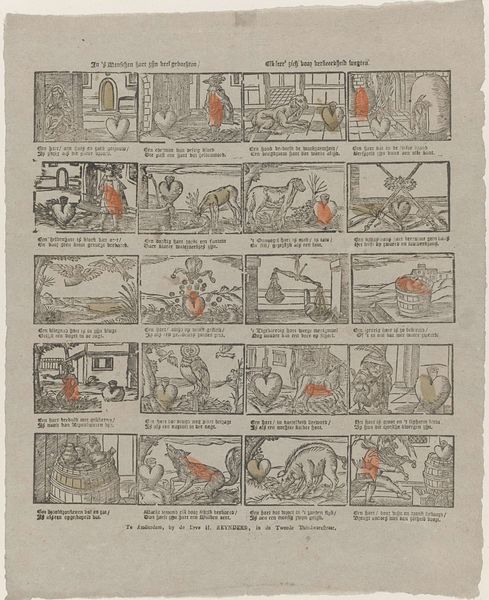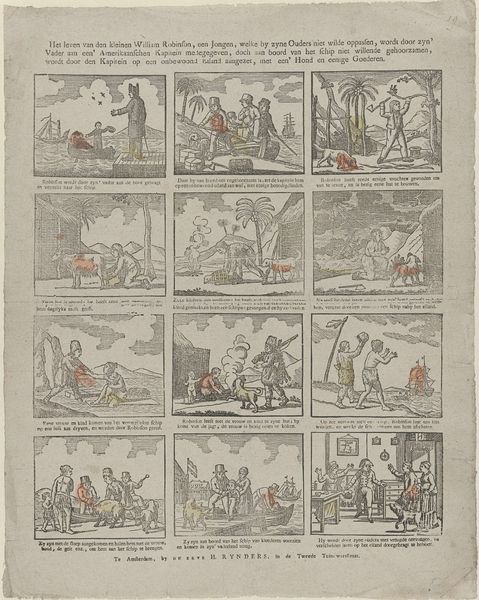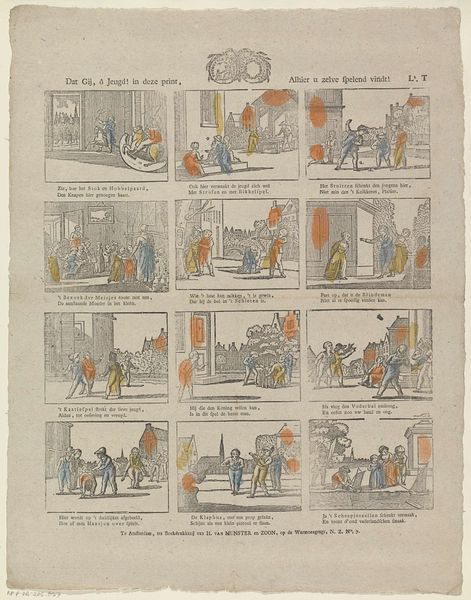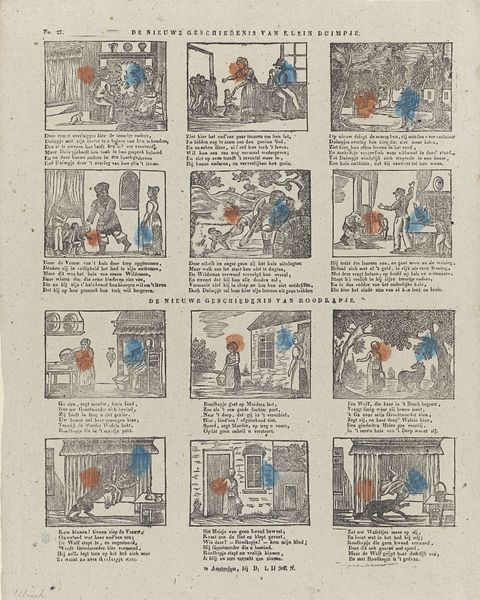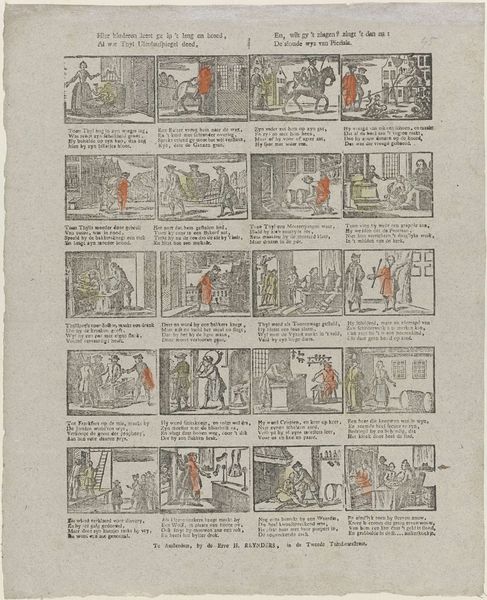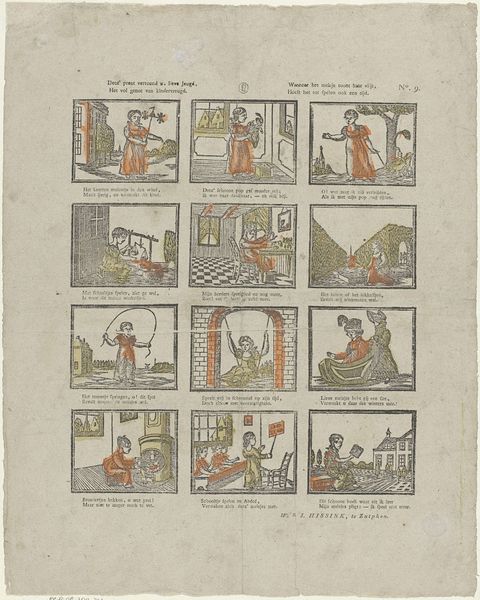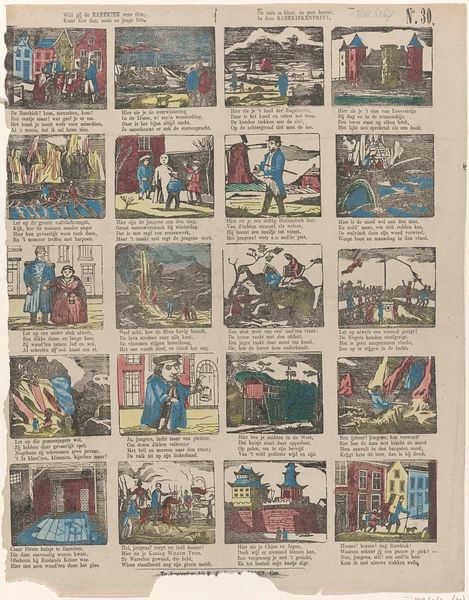
print, engraving
#
narrative-art
# print
#
ukiyo-e
#
folk-art
#
genre-painting
#
engraving
Dimensions: height 422 mm, width 331 mm
Copyright: Rijks Museum: Open Domain
Curator: Look at this fascinating print from between 1831 and 1854, "De vertelling van Roodkapje," housed here at the Rijksmuseum. The artist, Erve H. Rynders, presents the story of Little Red Riding Hood in a comic strip-like series of engravings. What's your first impression? Editor: My first impression is the strong feeling of impending doom hanging in the air! The scenes, despite their simplicity, feel heavy with the darkness lurking within a seemingly harmless fairytale. This arrangement also resembles those Victorian morality pamphlets, cautioning young women about their place and conduct. Curator: Exactly. We see how certain elements are repeated—the consistent red coloring on the girl and the strategic use of nature, perhaps a reference to the primal and uncontrolled—serve to anchor our memory of the classic cautionary tale. The scenes transition sequentially, almost like reading from left to right and top to bottom, a visual roadmap of transgression and vulnerability. Editor: Indeed, it strikes me how Red Riding Hood is positioned at the nexus of the domestic, represented by her mother's home, and the perilous wild. It underscores society's fears regarding female independence, venturing beyond the protected sphere. Notice, too, how in most panels Red is accompanied—always at the border or threshold of male activity, presence, or power. It emphasizes, symbolically, Red's status, her perceived danger and weakness. Curator: The choice of printmaking, specifically engraving, further emphasizes this didactic element. Engravings were widely accessible. Erve H. Rynders' storytelling through such a popular format helped to both spread and engrain the story within a wide public consciousness. It is fascinating to explore the cultural impact and memory through this medium. Editor: Absolutely, by analyzing the visual storytelling methods and the materials chosen for its dissemination, one gains a new vantage to better scrutinize deeply embedded narratives of control and how they shape our understanding and experience even today. This Red Riding Hood here makes the viewer critically evaluate the broader sociopolitical implications, from female agency to obedience. Curator: I am left pondering the artist’s ability to portray such a timeless narrative within a constrained format, using specific recurring images or artistic decisions that still hold great interpretive power. Editor: I am thinking of how this art work encapsulates a kind of warning to any "unprotected" bodies to not venture beyond expected physical and metaphorical borders of culture.
Comments
No comments
Be the first to comment and join the conversation on the ultimate creative platform.

